
Chalcedony Aboɔden abo: Nneɛma, Nkyerɛase, Botae & Nea Ɛkeka Ho
 Chalcedony yɛ aboɔden abo a wɔfrɛ no quartz a ɛyɛ microcrystalline ne abo abusua, a ɛka ahorow du du pii a ɛwɔ kɔla ahorow ho. Woate agate, onyx, anaa carnelian ho asɛm? Afei wunim chalcedony aboɔden abo bi dedaw!
Chalcedony yɛ aboɔden abo a wɔfrɛ no quartz a ɛyɛ microcrystalline ne abo abusua, a ɛka ahorow du du pii a ɛwɔ kɔla ahorow ho. Woate agate, onyx, anaa carnelian ho asɛm? Afei wunim chalcedony aboɔden abo bi dedaw!
Nanso twɛn, so chalcedony yɛ aboɔden abo ankasa ? Yiw, chalcedony ne ne ahorow nyinaa yɛ aboɔden abo a ɛsom bo fã bi .
Sɛ woresusuw sɛnea wɔbɔ chalcedony din ho a, ɛyɛ kal-SEH-duh-nee — ɛnyɛ “ch” a wɔtaa de di dwuma te sɛ “nkɔmmɔbɔ.”
Dɛn na wonim ahwehwɛ chalcedony no? Wɔ USA no, chalcedony blue lace agate ahorow no ne Nebraska ɔman aboɔden abo a ɛyɛ aban de. Sɛ́ aboɔden abo no, wonim chalcedony sɛ ɛyɛ bruu a ɛyɛ mmerɛw, ne bo a ɛyɛ den, ne nea egu ahorow.
Bra bere a yɛrehwehwɛ chalcedony ntease ne sɛnea wɔde di dwuma, ne ne ahorow, sɛnkyerɛnnede, ne nea ɛkeka ho no. Woasiesie wo ho sɛ wobɛkɔ akɔhyɛn mu?

Dɛn Ne Chalcedony Ɔbo?
Chalcedony aboɔden abo dodow no ara yɛ fitaa, fitaa, anaa bruu. Blue chalcedony aboɔden abo ka nea ɛsom bo sen biara no ho na ebetumi ada adularescence a ɛnyɛ anifere adi — emu hann te sɛ ɔsram abo .
Awoɔ bo bɛn na ɛyɛ chalcedony? Abakɔsɛm mu no, na chalcedony yɛ May awobo, na ɛda so ara yɛ nsoromma mu hwɛ bo ma Gemini! Ɛnnɛ, mogya mu abo ahorow no yɛ March awobo .
Woredi ayeforohyia afahyɛ nnansa yi ara? Chalcedony ahorow no akata so! Onyx yɛ atetesɛm mu aboɔden abo a wɔde di mfe 7, carnelian yɛ nea wɔde yɛ mfe 17, na chrysoprase yɛ afe a ɛto so 18!
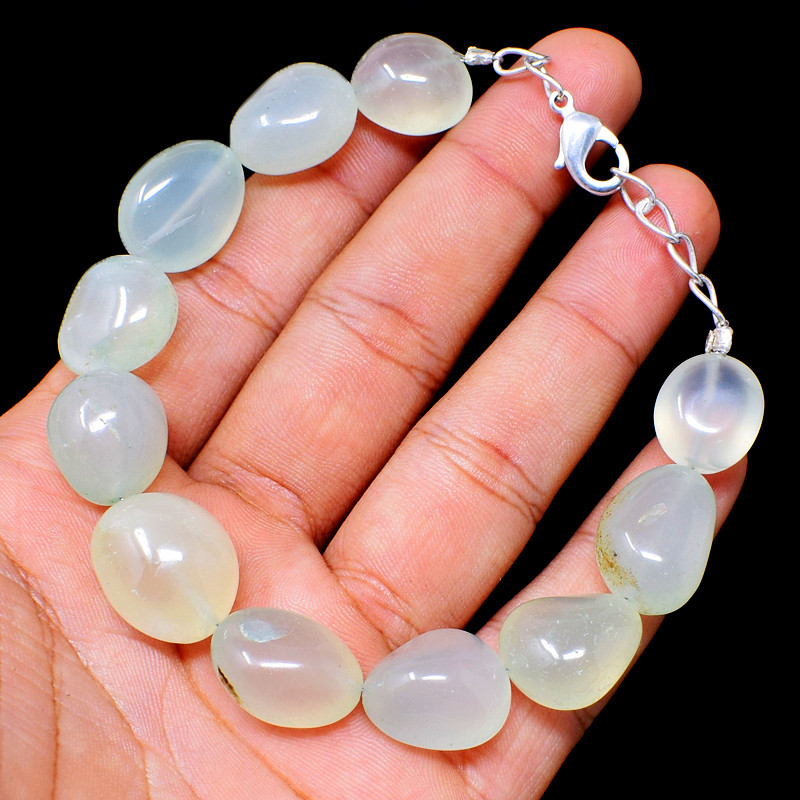
Chalcedony Nkyerɛkyerɛmu & Su ahorow
Chalcedony yɛ quartz a ɛtrɛw, a ɛyɛ silicon dioxide (SiO2). Chalcedony aboɔden abo yɛ microcrystalline quartz, nanso ɛno kyerɛ dɛn? Quartz abo ahorow betumi ayɛ macrocrystalline (a ahwehwɛ akɛse a wotumi hu wom) anaasɛ microcrystalline (a ahwehwɛ nketenkete a ɛte sɛ microscopic a wɔaboaboa ano kɛse). Sɛ nhwɛso no, amethyst ne citrine yɛ ahwehwɛ kɛse.
Nanso, chalcedony nkyerɛase no nkɔ awiei wɔ hɔ. Chalcedony abo dodow no ara yɛ microcrystalline quartz ne morganite a wɔaka abom. Moganite (ɛnyɛ morganite) yɛ silica ɔbo foforo a ɛsono sɛnea ɛyɛ ahwehwɛ sen quartz.
Moganite a ɛwɔ chalcedony mu no taa yɛ ɔha biara mu nkyem 1-20. Nanso, aboɔden abo no nso betumi adan quartz wɔ chalcedony mu, na ɛmma morganite biara nni akyi.
Hwehwɛ chalcedony mineral su a aka no wɔ ase ha:
Mohs denden : 6-7
Kɔla : Ɛsono, ebetumi ayɛ pɛ, wɔayɛ no nsusuwso, anaasɛ ɛwɔ kɔla ahorow pii; Mpɛn pii no, ɛyɛ fitaa, fitaa, fitaa-blue, tan, anaa fitaa-tuntum; Ebetumi akyerɛ kɔla biara
Ahwehwɛ nhyehyɛe : Trigonal
Luster : Rough yɛ waxy kosi dull; Polished yɛ srade kosi vitreous (te sɛ ahwehwɛ) .
Transparency : Ɛyɛ fã bi a ɛda adi kosi nea ɛnyɛ nea ɛda adi
Nneɛma a ɛma nneɛma yɛ mmerɛw : 1.53-1.55
Nnipa dodow : 2.55-2.91
Cleavage : Biara nni hɔ
Fracture : Ɛnyɛ pɛpɛɛpɛ, conchoidal, anaasɛ sub-conchoidal
Streak : Ɛyɛ fitaa
Luminescence : Ɛtɔ mmere bi a, ɛyɛ fluorescent; Inert a ɛnyɛ adwuma; Ɛyɛ ahabammono a ɛyɛ hare, kɔkɔɔ, anaa borɔdɔma wɔ LW-UV mu; Green, kɔkɔɔ a ɛyɛ hann, anaa tan wɔ SW-UV mu
Nneɛma a efi aniwa so : Ɛtɔ mmere bi a chatoyancy , iridescence (te sɛ ogya agate), adularescence
So chalcedony abo ho yɛ na? Dodow no ara dɔɔso, nanso egyina ahorow ahorow no so, na yɛbɛka ho asɛm akyi!
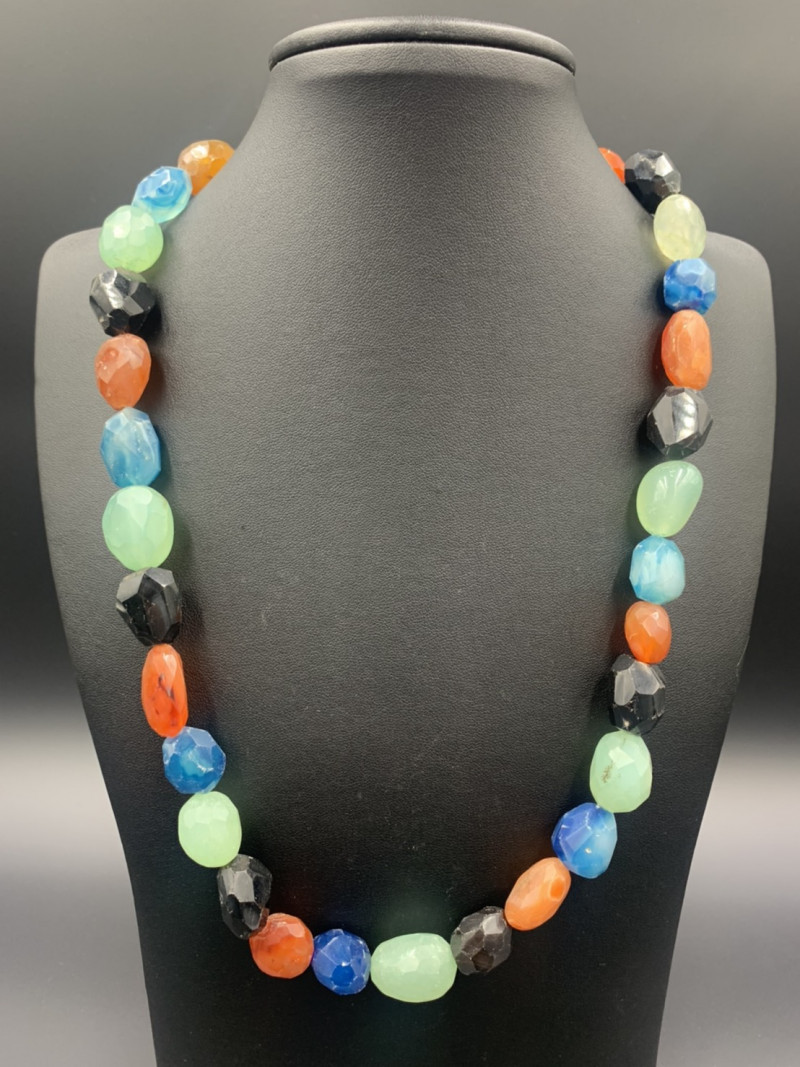
Chalcedony Ahorow Ahorow
Akwan titiriw abien na ɛwɔ hɔ ma chalcedony ahorow: nea ɛyɛ kɔla a ɛyɛ den ne nea ɛwɔ kɔla ahorow pii. Chalcedony aboɔden abo a wɔmfa din foforo nka ho no taa yɛ kɔla a ɛyɛ den, ɛyɛ hann, na mpɛn pii no ɛyɛ fitaa anaa bruu.
Agate ne jasper biara a wobɛkata so no boro akwankyerɛ yi so, nanso wubetumi asua pii afa wɔn ho denam emu biara a wobɛkyere so! Mmara titiriw a ɛfa chalcedony a wɔde kɔla ayɛ ho ne sɛ, nea ɛyɛ translucent biara yɛ agate na nea ɛyɛ opaque biara yɛ jasper.
Aventurine a wɔde yɛ nneɛma

Aventurine yɛ chalcedony soronko a wɔde feldspar aka ho. Ɛtaa yɛ ahabammono nanso ɛwɔ kɔla dodow no ara. Fuschite ma ne kɔla a ɛyɛ ahabammono ba, na dodow a ɛkɔ soro no kyerɛ aventurine a ɛyɛ ahabammono a ɛyɛ hyew a ɛnyɛ hann kɛse.
Ɔbo yi su a ɛda nsow ne aventurescence, dade a ɛhyerɛn a mprɛte nketenkete a pyrite , goethite, anaa hematite , na ɛde ba. Saa nneɛma a wɔde ka ho yi dodow a ɛsonosonoe betumi ama kɔla ahorow a ɛyɛ hare na ɛyɛ tuntum aba.
Mogya mu ɔbo
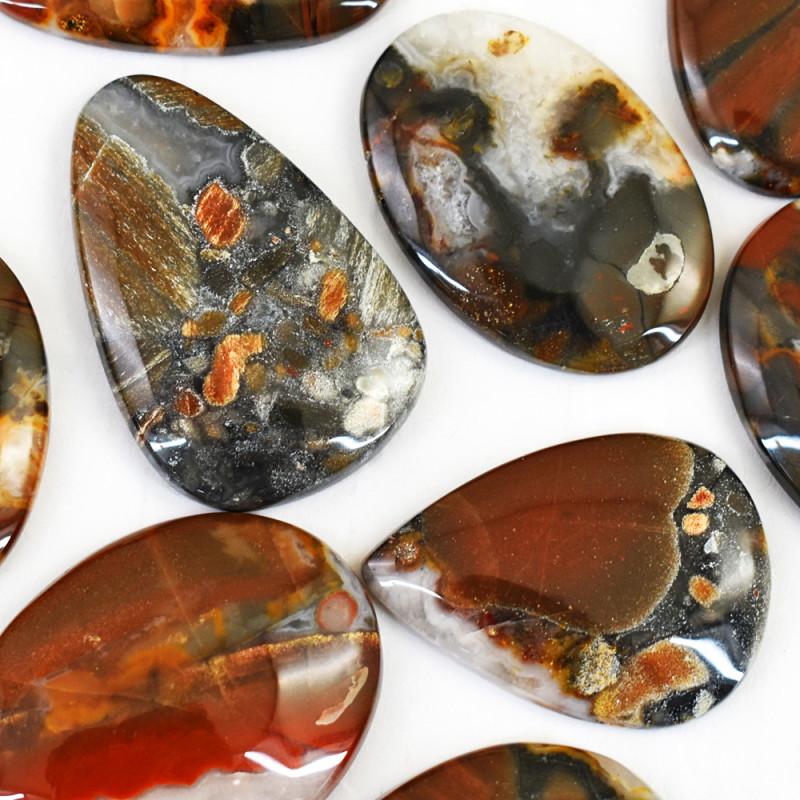
Bloodstone, anaa heliotrope, yɛ ɔbo a ɛnyɛ hann a ɛyɛ ahabammono te sɛ kwae a ɛwɔ nsensanee a ɛyɛ kɔkɔɔ te sɛ mogya. Sɛ nea ɛboro ahabammono ne kɔkɔɔ na ɛwɔ hɔ a, ebia wɔn a wɔyɛ agude akyerɛw saa ɔbo yi sɛ “jasper a ɛyɛ fɛ.” Asɛm foforo a wɔde di gua ma mogya abo ne “apuei fam jasper.”
Kɔla a ɛyɛ ma ne sɛnea ɛte wɔ mogya abo so no gu ahorow, efi nsensanee so kosi nsensanee anaa nhama so. Nneɛma kɔkɔɔ a wɔde ka ho no fi hematite mu.
Carnelian na ɔkyerɛwee

Carnelian yɛ chalcedony a ɛyɛ hann kosi nea ɛnyɛ hann a ɛwɔ kɔkɔɔ, borɔdɔma, ne kɔkɔɔ a ɛwɔ ntam. Ebia saa aboɔden abo yi wɔ kɔla biako, a ɛyɛ den anaasɛ kɔla abiɛsa no nyinaa nsusuwso. Carnelian a ɛyɛ kɔkɔɔ-akutu no som bo sen biara.
Saa ahorow yi te sɛ sard, nanso ɛsono sard wɔ carnelian ho wɔ ne kɔla a ɛyɛ tuntum na ɛyɛ bruu no mu. Nanso, chalcedony ahorow abien no nyinaa nya wɔn kɔla fi dade oxide a nsu wom (kɔla kɔkɔɔ ne bruu) anaa dade oxide (kɔkɔɔ) mu.
Chrome a wɔde yɛ Chalcedony

Chrome chalcedony yɛ po mu ahabammono kosi emerald-ahabammono a wɔde chromium kɔla ayɛ. Saa chalcedony a ɛyɛ ahabammono a wɔnyɛ ho adwuma kɛse yi taa fi Zimbabwe, baabi a wɔfrɛ no Mtorolite anaa Mtorodite no.
Chrysoprase a wɔde yɛ aduru
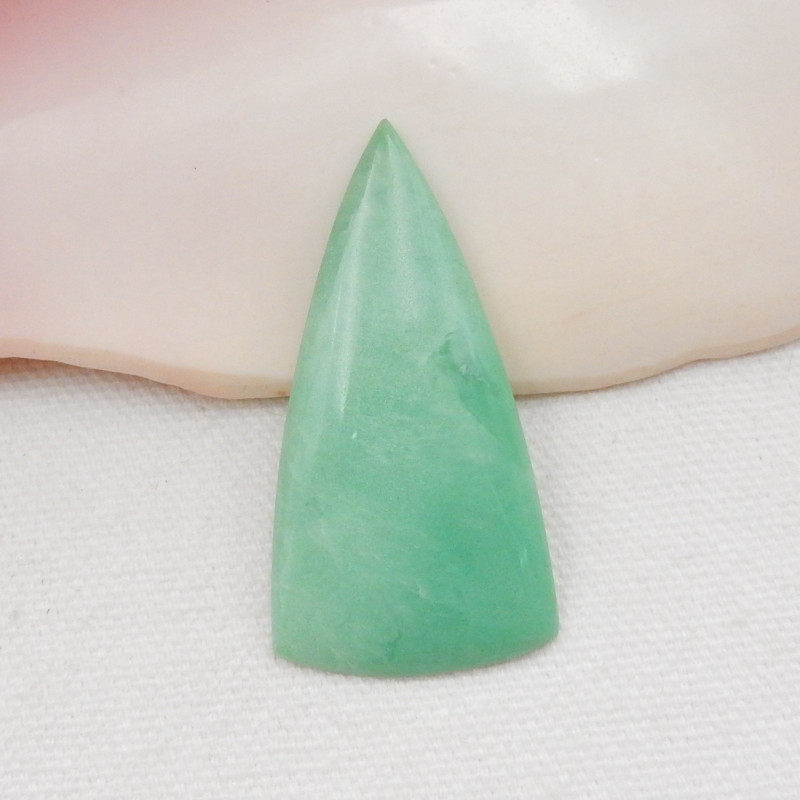
Chrysoprase, anaa chrysophrase, yɛ ahabammono foforo a ɛyɛ nufusu kɔkɔɔ-ahabammono kosi ahabammono a emu dɔ, nanso mpɛn pii no ɛyɛ apɔw-mu-teɛteɛ. Ɛyɛ chalcedony a ɛho yɛ na sen biara nanso wonnim no yiye. Nea ɛnte sɛ chrome chalcedony no, ahabammono a ɛwɔ chrysoprase mu no fi nickel oxide mu. Aguadeyɛfo binom de “prase” di dwuma ma chrysoprase aboɔden abo a emu dɔ nanso ɛnyɛ ahabammono a ɛhyerɛn pii.
Chrysocolla Chalcedony (Aboɔden abo a wɔfrɛ no Silica) .
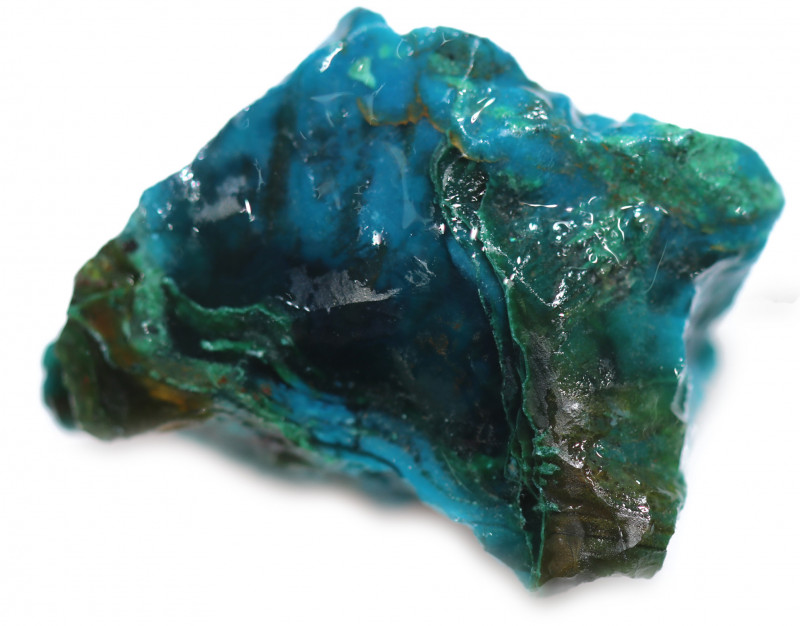
Chrysocolla chalcedony ne chalcedony ahorow a ɛsom bo sen biara. Wɔtɔn ɔbo yi sɛ “gem silica,” na ɛyɛ nea ɛyɛ hann kosi nea ɛyɛ fã bi na ɛtaa yɛ bruu-ahabammono anaa bruu a ɛyɛ hyew.
Chrysocolla nketenkete a ɛka ho no ne chalcedony nyin ma ɔbo no kɔla. Chrysocolla chalcedony betumi ada kɔla a ɛnteɛ adi a egyina dodow a wɔde ka ho so. Ebia wubehu saa ahwehwɛ yi mpo wɔ geodes mu !
AquapraseTM na ɛyɛ adwuma

AquapraseTM yɛ chalcedony ahodoɔ foforɔ, a wɔhunuu no wɔ afe 2014. Asɛmfua "AquapraseTM" yɛ aguadi asɛmfua a Avant Chordia ahyɛ no agyiraeɛ. Gemological Institute of America (GIA) na ɛdii kan bɔɔ chalcedony subtype no ho amanneɛ wɔ wɔn Winter 2015 edition of Gems and Gemology . Wonyaa wɔn nhwɛsode ahorow no fii Helani a wagye din a ɔhwehwɛ aboɔden abo Yianni Melas hɔ, na ɔkae sɛ efi baabi a wɔankyerɛkyerɛ mu wɔ Afrika.
Saa ahorow yi yɛ bruu-ahabammono kosi turquoise a ɛyɛ hann na ɛyɛ hyew, na wɔde nikel ne chromium na ɛyɛ kɔla. Ɛyɛ adebɔ mu ade na wɔansa. Wobetumi akyerɛ nsonsonoe a ɛda AquapraseTM ntam wɔ chrysoprase ne gem silica ho denam nneɛma a ɛma kɔla ne sɛnea ɛtwetwe no so (wɔde spectroscope hu).
Onyx a wɔde yɛ nneɛma
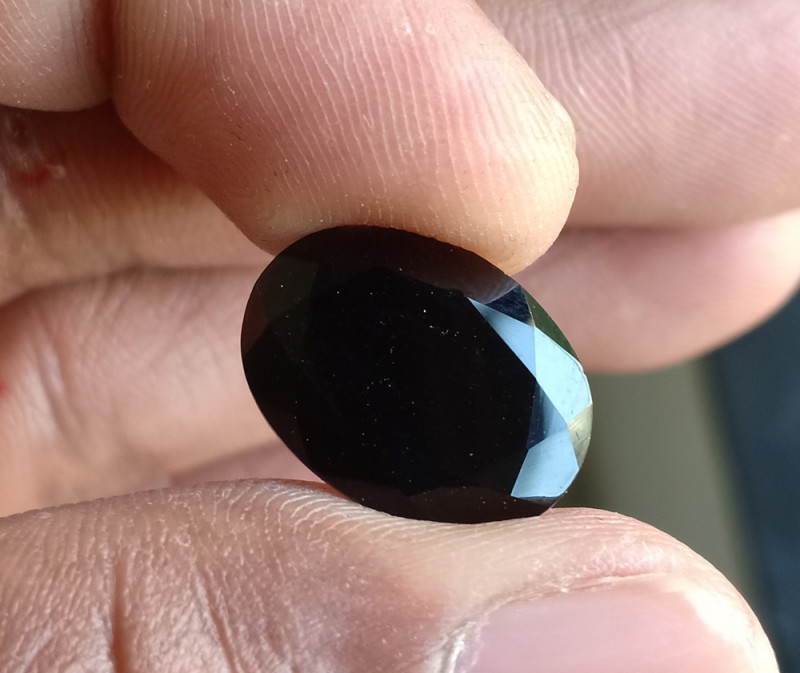
Onyx yɛ chalcedony ɔbo a ɛyɛ tumm a ɛtɔ mmere bi a ɛyɛ tuntum, bruu, fitaa, anaa mpo kɔkɔɔ mpo a ɛne ne ho di nsɛ. Aboɔden abo ho animdefo adwene nhyia wɔ sɛ ebia onyx yɛ agate ho, na ebinom ka sɛ onyx kɔla a ɛyɛ tratraa a wɔde ntama ayɛ no ma ɛda nsow wɔ agate a ɛyɛ kurukuruwa no ho.
Ebia wunim onyx tuntum yiye , nanso saa kɔla yi ntaa mma wɔ awosu mu. Mpɛn pii no, onyx tuntum aboɔden abo fi asikre-acid anaa aduru a wɔde kɔla yɛ mu.
Sard & Sardonyx na ɔkyerɛwee
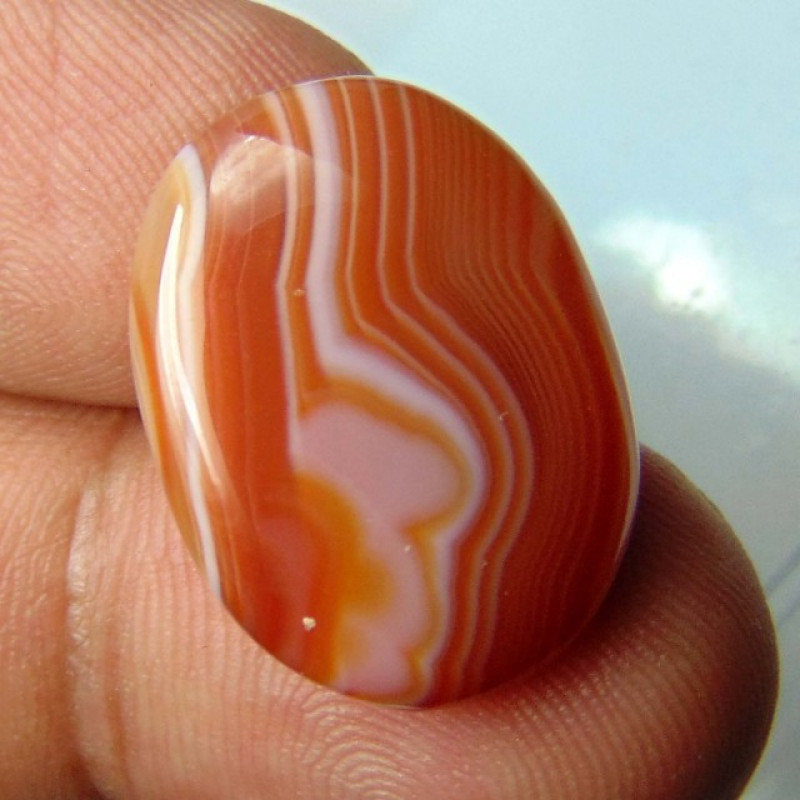
Sard yɛ chalcedony a ɛyɛ hann a ɛyɛ kɔkɔɔ-biribiri, bruu-kɔla, anaa bruu. Sɛ sard ne onyx bom a, yenya ɔbo bi a ne kɔla yɛ osutɔbere (te sɛ carnelian) a kɔla ahorow a wɔfrɛ no sardonyx wom. Sardonyx kɔla ahorow no betumi ayɛ fitaa, tuntum, anaa n’abien nyinaa.
Alright, momma yɛnsakra mfi mineral afã no nkɔhwehwɛ chalcedony metaphysical su ahorow mu!

Chalcedony Aboɔden abo Nkyerɛase & Abakɔsɛm
Nea edi kan no, dɛn na chalcedony yɛ ho sɛnkyerɛnne? Chalcedony gyina hɔ ma kommyɛ, biakoyɛ, ne ahotɔ. Wɔto chalcedony fitaa no din mpo sɛ “Ɔbo a Ɛma Mpaemuka.”
Esiane sɛ chalcedony su ahorow bata ɔsram ho nti, ɛbata ɔbea afã horow ho, na ɛde abodin foforo ba: “Awo Abo.” Aqua chalcedony asekyerɛ no yɛ onuayɛ (anaasɛ onuawayɛ) ne ayamye.
Wɔ Helafo anansesɛm mu no, chalcedony ahwehwɛ ntease no ne Gaia, Asase Ɛna no nipadua no wɔ abusuabɔ. Ná tete Romafo gye di sɛ ɔbo no betumi ama baguam kasa atu mpɔn. Celtfo anansesɛm de ahwehwɛ no bata Clota, Clyde Asubɔnten no nyamewa no ho. Amerikafo Ankasa de chalcedony di dwuma sɛ ɔbo kronkron wɔ mmusuakuw ntam abusuabɔ ho guasodeyɛ ahorow mu.

Abakɔsɛm
Chalcedony din no fi Latin kasa mu chalcedonius anaa calchedonius . Georgius Agricola, Germanni aboɔden abo ho ɔbenfo a wagye din, kyerɛw abusuabɔ a ebetumi aba sɛ ɛne Chalcedon, tete po so hyɛn gyinabea bi a ɛwɔ nnɛyi Kadıköy, Turkey, no ne nkyerɛase fi mu no ho asɛm wɔ 1546 mu.
Roma abɔde ho nimdefo Pliny Ɔpanyin de “chalcedony” dii dwuma de kaa jasper a ɛyɛ hann ho asɛm wɔ ne nhoma Naturalis Historia a ɔyɛe wɔ afe 75 Y.B.
Wɔaka nea Chalcedony kyerɛ wɔ Bible mu no ho asɛm wɔ Adiyisɛm (bɛyɛ afe 95 Y.B.) mu sɛ Fapem Abo 12 a ɛkanyan nnɛyi awo abo no fã bi no mu biako. Wɔ Yudasom mu no, na aboɔden abo a ɛwɔ Ɔsɔfo Panyin no Koko so no bi ne jasper, chrysoprase, ne sardonyx ahorow.
Fam tutu ho adanse a edi kan a ɛkyerɛ sɛ wɔde chalcedony dii dwuma (ma nnwinnade ne amanne kwan so nnade) fi 30,000 A.Y.B. Chalcedony nsɔano ho adanse taa pue wɔ abakɔsɛm nyinaa mu, efi 1800 A.Y.B.
Wɔn a wɔte bɛn Silk Road aguadi kwan no (a na ɛyɛ adwuma fi 200 A.Y.B. kosi 1500 A.Y.B.) de chalcedony ahorow te sɛ carnelian dii dwuma de yɛɛ nkaa, nhwiren, ne nsusuwso.
Carnelian ho hia titiriw wɔ Nkramofo mu, efisɛ wɔkae sɛ Muhammad hyɛ carnelian chalcedony mpɛtea. Wɔbɔ amanneɛ sɛ otuu fo sɛ, “Hyɛ agate mpɛtea, efisɛ ɛbɛbɔ wo ho ban afi bɔne biara ho.”
Bere a Germany dan kɔɔ nnansa yi mmere mu no, wofii ase tutuu chalcedony agate no na wodii adwini wɔ 1400 mfe no mu. Eduu 1800 mfe no mu no, Idar-Oberstein san bae sɛ beae titiriw a wonya chalcedony aboɔden abo a wɔasen na wɔtaa de kɔla yɛ.
Yenim sɛnea tetefo de dii dwuma, nanso dɛn na chalcedony ye ma mprempren?
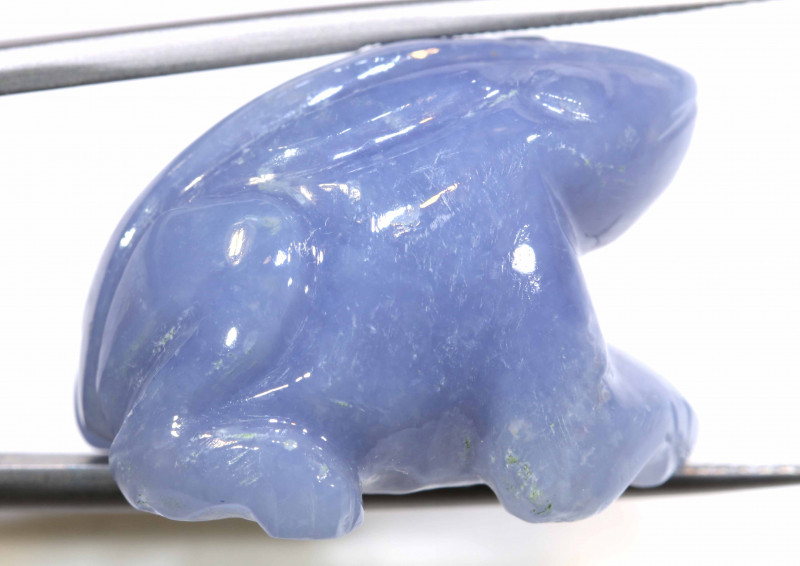
Chalcedony Ayaresa Nneɛma
Aboɔden abo nyinaa wɔ honhom fam ntease sɛ aboɔ a ɛsa yareɛ , a wɔtaa kyekyere wɔn kɔla ho. So chalcedony yɛ ɔbo a ɛsa yare? Wobɛtow kyakya!
Te sɛ aboɔden abo afoforo a ɛyɛ bruu , mfaso horow a ɛwɔ blue chalcedony so no bi ne sɛ ɛbɛma adwene no dwo na ɛhyɛ wo nkuran sɛ kasa a wunsuro hwee. Sɛ́ aboɔden abo a ɛyɛ pink , pink chalcedony gyina hɔ ma ayamye, nkate fam ayaresa, ne ayamye.
Na honam fam, nkate fam, ne chakra ayaresa chalcedony mfaso horow no nso ɛ?
Nipadua mu Ayaresa
Chalcedony abo a wɔde sa yare no agye din de sa ɔhaw ahorow a ɛwɔ mogya a ɛkɔ nipadua no mu ne nea ɛma aduan mu yɛ den no mu. Tumi ahorow bi a wɔkyerɛ sɛ ɛyɛ chalcedony no bi ne sɛ ɛma nipadua no tumi a ɛko tia nyarewa no yɛ kɛse na ɛhyɛ nipadua no den bere a ɔrenya ahoɔden afi yare mu no.
Crystal ayaresafo nso de chalcedony bo di dwuma de ma nipadua no ahoɔden yɛ kɛse na ɛsan ma nipadua no ahoɔden bio. Afoforo nso de aboɔden abo no di dwuma ma wɔtwetwe mineral yiye na wotumi hu ade yiye.
Nkate mu Ayaresa
Wɔkyerɛ sɛ Chalcedony ma nkate mu kari pɛ, abusuabɔ, ne tema nya nkɔso. Nnipa pii a wɔde ahwehwɛ di dwuma ka sɛ chalcedony ma wogye nneɛma tom, wɔyɛ ayamyefo, na wonya adwempa.
Nkate fam mfaso foforo betumi ayɛ nkate mu ahoɔden a wɔde gyina ɔhaw ano. Ɛdenam koma a ɛyɛ basaa a ɛma wodwo na ɛma wɔn awerɛhyem so no, chalcedony crystal betumi aboa ma wo ho mu adwenem naayɛ afi hɔ na ahyɛ wo nkuran sɛ wobɛka wo nkate ho asɛm a wunsuro.
Chakra Ayaresa
Wo chakras yɛ ahoɔden mmeae a ɛne sɛnkyerɛnne ahorow wɔ abusuabɔ. Wɔhyɛ yiyedi nyinaa ho nkuran bere a wɔkari pɛ no, na chakra abo tumi kari pɛ. Chakra bɛn na chalcedony ye ma? Chalcedony ye ma menewa chakra no!
Menewa chakra no boa wo ma wote wo ho a emu dɔ no ase na wode ahotoso ka wo nokware. Menewa mu chakra a asiw ma obi te nka sɛ wayɛ mmerɛw, ɔfɛre ade, anaasɛ ontumi nka kasa.
Wubetumi de blue chalcedony adi dwuma de abue saa chakra yi, na ama woanya wo ho nimdeɛ a eye na wode nokwaredi akasa.
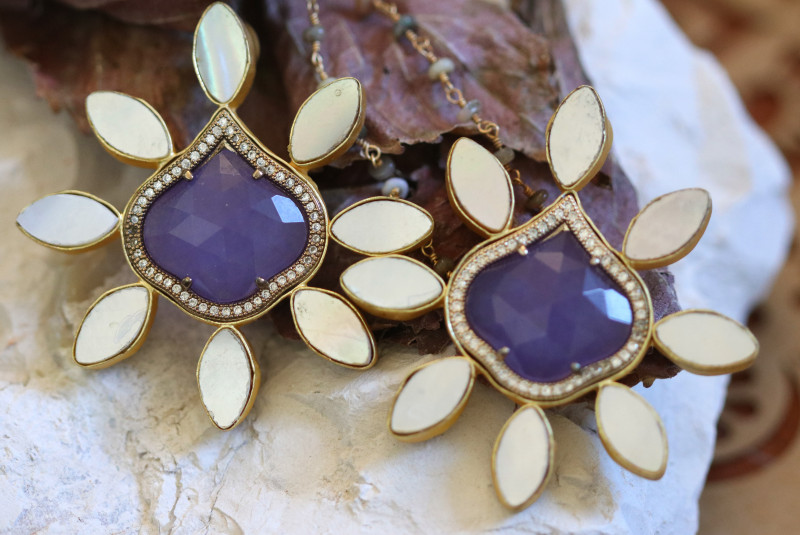
Chalcedony Aboɔden abo Nneɛma a Ɛwɔ Hɔ
Aboɔden aboɔ su ne nea abenfoɔ de kyerɛ ɔboɔ su ne ne boɔ. Dɛn na ɛma chalcedony som bo? Chalcedony bo a ɛsom no fi ne kɔla, ne twitwa, sɛnea emu da hɔ, ne sɛnea wɔde sa yare no so.
Ahosuo
Chalcedony kɔla ahorow ba esiane efĩ te sɛ kɔbere, dade, nikel, titanium, ne chromium nti. Chalcedony kɔla a wɔtaa de di dwuma wɔ abo a ɛwɔ kɔla biako mu no yɛ fitaa, nanso kɔla a ɛyɛ mmerɛw a ɛyɛ kɔkɔɔ, fitaa, anaa bruu nso abu so.
Kɔla bɛn na ɛho yɛ na sen biara a wɔde yɛ chalcedony? Abɔde mu no, chalcedony bruu a emu dɔ a wɔde kɔla yɛ pɛ no ne nea ɛntaa nsi na ɛsom bo sen biara, ɛwom sɛ pink nso ho yɛ na yiye de. Chalcedony bruu ahorow no sõ, na mpɛn pii no, ɛwɔ ase pink anaa fitaa.
Saturation a ɛkorɔn bɛkyerɛ sɛ abɔde mu chalcedony kɔla biara bo bɛkɔ soro.
Twa
Chalcedony wɔ akwan horow pii so, a nea ɛka ho ne afã horow a wɔatwitwa wɔ nsusuwii a ɛyɛ gyinapɛn ne nea ɛyɛ fɛ mu. Faceted chalcedony taa yɛ nea ɛyɛ hann kosi nea ɛda adi fã.
Nanso, wɔn a wotwitwa aboɔden abo taa paw nea wɔatwitwa a enni afã biara te sɛ nhwiren anaa cabochons , a emu biara yɛ pɛpɛɛpɛ ma chalcedony kɔnmuade. Nsusuwii nso abu so, de yɛ chalcedony agude ne nneɛma a wɔde siesie hɔ nyinaa.
Ɛda adi pefee
Chalcedony abo dodow no ara wɔ nneɛma a wɔde ka ho a wotumi hu a ɛdɔɔso ma ɛbɛyɛ te sɛ nea ɛnyɛ hann anaasɛ ɛyɛ hann na ɛyɛ nufusu. Chalcedony nyɛ nea ɛda adi sɛnea ɛbɛyɛ a obenya aboɔden abo a ɛyɛ kɔla a ɛma emu da hɔ . Nanso, chalcedony a ɛyɛ fã bi a ɛda adi no na ɛma nneɛma bo yɛ den sen biara.
Chalcedony a ɛyɛ hann a nneɛma kakraa bi na ɛka ho no som bo sen chalcedony a wɔde ka ho kɛse. Nneɛma a ɛsom bo a ɛka chalcedony a ɛwɔ kɔla biako ho nkutoo ne nhama a ɛne ne ho di nsɛ na ɛyɛ den a ɛde chatoyancy (“ɔkraman aniwa” nkɛntɛnso) ba no.
Ayaresa ahorow
Ɛtɔ mmere bi a wobetumi ayɛ Chalcedony ho adwuma, titiriw nea enni kɔla a ɛte sɛ nufusu. Kɔla ne ɔhyew ne ayaresa a wɔtaa yɛ, na wɔyɛ abien no nyinaa de ma kɔla no yɛ kɛse anaasɛ wɔsesa. Wɔtaa de sa abo a ɛyɛ mmerɛw so, nanso ebia wɔbɛma ebinom ayɛ fitaa ansa na wɔde kɔla ayɛ.
Ɔhyew betumi ama chalcedony abo a dade efĩ wom no ayɛ kɔkɔɔ esiane dade a ɛyɛ oxidation nti. Mpɛn pii no, ɔhyew a wɔde sa yare no yɛ nea wontumi nhu na ɛyɛ nea egyina pintinn.
Mpɛn pii no, agudeyɛfo de kɔla yɛ chalcedony bruu anaa ahabammono na ama ɔbo a ɛyɛ mmerɛw no ayɛ hyew kɛse anaasɛ wɔma ɛyɛ te sɛ nea wɔntaa nhu te sɛ chrysoprase. Chalcedony a wɔde kɔla ayɛ bruu anaa ahabammono taa yɛ nea ɛhyerɛn wɔ ɔkwan a ɛnyɛ awosu so na ɛte sɛ nea ɛyɛ pink wɔ Chelsea filter ase .

Chalcedony Nkyekyɛmu & Nneɛma a Ɛfiri Hɔ
Chalcedony nhyehyɛe no fi ase denam magma a ɛyɛ hyew a ɛretu no so. Ogya bepɔw dwumadi pia magma kɔ Asase so, wɔ Asase ase pɛɛ. Mframa ahurututu ba bere a magma a ɛyɛ hyew no dwo na ɛyɛ den no, na ɛma mmeae a hwee nni hɔ wɔ ɔbotan a awiei koraa no ayɛ den no mu.
Nsu a silica ne aboɔden abo wom no kɔ mmeae a ɛhɔ yɛ hyew no, baabi a aboɔden abo no yɛ ahwehwɛ bere a nsu no yɛ hyew no. Yebetumi ada silica ne oxygen ase wɔ chalcedony nhyehyɛe titiriw ne efĩ ahorow a ɛwɔ ne kɔla ahorow ho.
Chalcedony afrafra a wɔde kɔla ayɛ te sɛ sardonyx ba bere a saa nsu a ɛwɔ aboɔden abo no kɔ hɔ mpɛn pii no, na ɛde aboɔden abo foforo ba no. Saa nneɛma a wɔde asie yi ma chalcedony ne sard a ɛyɛ ntoatoaso, wɔ sardonyx fam no, a ɛma kɔla-banding ba.
Mmeae a Wɔtu Tuo
Ɛkame ayɛ sɛ Chalcedony akorae wɔ wiase nyinaa wɔ asasepɔn biara so. Ebia Brazil ne USA na ɛwɔ chalcedony ahorow ahorow a egu ahorow sen biara.
Yɛakyerɛw mpɔtam titiriw biara a ɛne wɔn chalcedony type(s) a ɛne no hyia:
Arizona, U.S.A. - Nnua a wɔfrɛ no chrysocolla chalcedony
Australia - Chrysoprase, Mogya Aboɔ, Onyx, Sardonyx
Brazil - Karnelian, Sard, Mogya Aboɔ, Chrysoprase, Aventurine, Onyx, Sardonyx, Chalcedony a ɛyɛ pink
California, U.S.A. - “Mojave” a ɛyɛ bruu a wɔfrɛ no chalcedony, Chrysoprase, Onyx
Misraim - Karneliafo
Iceland - “Nsuo” a ɛyɛ chalcedony
India - Mogya Aboɔ, Karnelian, Sardonyx, Aventurine, Onyx
Indonesia - Chalcedony a ɛyɛ kɔkɔɔ
Madagascar - Onyx, Chrysoprase, Karnelian, Mogya Ɔbo
Mexico - Chrysocolla a wɔde yɛ aduru a wɔfrɛ no chrysocolla, .
Namibia - “Afrikafo bruu” chalcedony
Nevada, U.S.A. - “Mt. Airy” a ɛyɛ bruu a wɔfrɛ no chalcedony
Oregon, U.S.A. - “Holly blue” a ɛyɛ lavender kɔla chalcedony, Onyx
Russia - Chrysoprase, Ɔbarima bi a wɔfrɛ no Onyx
Turkey - Chrome a wɔde yɛ aduru, Blue chalcedony, Chrysoprase
Uruguay - Karnelian, Sard, Onyx, ne nea ɛwɔ hɔ
Zimbabwe - Chrome a wɔde yɛ chalcedony
Momma yenni asɛmmisa bi a ɛho hia ho dwuma: so chalcedony yɛ ɔbo a ne bo yɛ den? Mpɛn pii no, dabi, nanso ahorow bi bo yɛ den sen afoforo.

Chalcedony Bo & Ne Bo
Mpɛn pii no, Chalcedony yɛ ɔbo a ɛdɔɔso, enti mpɛn pii no ne bo yɛ mmerɛw. Momma yɛnhwɛ blue chalcedony ɔbo bo ahorow no kan.
Chalcedony bruu a ɛwɔ afã horow a ɛwɔ kɔla bruu a emu dɔ ne translucence pa betumi adu $15 wɔ carat biara mu. Chalcedony bruu a ɛyɛ mmerɛw a nufusu translucence wom no kɔ $0.70-$3 carat biara ma faceted gems ne $0.40-$3 carat biara ma cabochons wɔ wholesale.
Abo a ɛyɛ bruu a ɛyɛ mmerɛw kosi lavender a efi Oregon, U.S.A. — “Holly Blue” chalcedony — ka nea ɛsom bo sen biara no ho. Holly blue chalcedony bo fi $14-$20 wɔ ounce biara mu ma rough a ɛkorɔn wɔ blues a ɛyɛ hyew mu. Lower-quality rough a paler kɔla yɛ $40-$150 wɔ pound biara mu ($2.50-$10 wɔ ounce biara mu).
Ahoɔden ahorow a ɛsom bo sen biara, chrysocolla chalcedony, betumi atɔn $100+ wɔ carat biara mu ama aboɔden abo a wɔatwa no yiye. Ɛsɛ sɛ saa aboɔden abo yi nso nya kɔla bruu a ɛyɛ ma, biribiara nka ho, na mpo ɛyɛ hann. Nanso, chrysocolla chalcedony rough yɛ $0.80-$1.50 pɛ wɔ carat biara mu.
Chrysoprase aboɔden abo nso som bo nanso ne bo yɛ den, na ɛgye $2-$12 wɔ carat biara mu ma aboɔden aboɔ a ɛwɔ afã a ɛkorɔn. Nanso, saa chalcedony yi bo a ɛwɔ carat biako mu no betumi adu $20-$40 wɔ carat biara mu a egyina faako a efi ba so. Chrysoprase rough wɔ wholesale sɛ $1.50-$2 wɔ carat biara mu.

Chalcedony Ɔhwɛ ne Nsiesiei
Sɛ wunim sɛnea wɔhwɛ aboɔden abo yiye a, ɛbɛboa ma chalcedony akɔ so ahyerɛn te sɛ foforo.
Nea edi kan no, so chalcedony betumi akɔ owia mu? Egyina so. Ahorow dodow no ara a wɔansiesie no nyɛ nea ɛyɛ hyew anaa hann nka. Chalcedony bruu bi betumi ayera wɔ owia hann mu, na chalcedony a wɔde mframa a ano yɛ den ahyɛ mu ma no tumi te ɔhyew nka.
So chalcedony betumi akɔ nsu mu? Aane. Nokwarem no, wubetumi ama chrysocolla chalcedony kɔla ayɛ kɛse denam nsu a wode bɛhyɛ mu no so! Nanso, yɛhyɛ nyansa sɛ kwati sɛ wode nsu bɛto nsu mu bere tenten wɔ chalcedony dodow no ara ho.
Ɔkwan a ahobammɔ wom sen biara a wɔfa so tew chalcedony ho ne sɛ wɔde brɔs a ɛyɛ mmerɛw, nsu a ɛyɛ hyew, ne samina a ɛnyɛ den bedi dwuma. So wowɔ chalcedony a wɔde kɔla ayɛ? Ma ɛnkɔ akyirikyiri fi nneɛma a wɔde tew nneɛma ho a wɔde nnyigyei a ano yɛ den, acetone (te sɛ nea wɔde yi nnadewa a wɔde yɛ nnadewa), ne nnuru a wɔde di dwuma wɔ fie ho.
Nea ɛbɛyɛ na woasiw akisikuru anaa abubuw ano no, yi chalcedony agude ansa na woayɛ apɔw-mu-teɛteɛ a emu yɛ den. Fa sie wɔ ɔkwan soronko so fi aboɔden abo afoforo ho wɔ ade a ɛyɛ tumm a wɔde ntama ayɛ mu.
Worehwehwɛ sɛ Wobɛtɔ Chalcedony Aboɔden abo?
Sɛ worebɔ chalcedony ho ose mprempren a, yɛmfa asodi no nto wo so! Esiane sɛ wɔde mfe apem pii adi dwuma wɔ abakɔsɛm mu ne ahorow pii a wubetumi apaw bi nti, chalcedony yɛ ɔbo a ɛsom bo ma obiara a ɔpɛ ne ɔkwan a wɔfa so yɛ no. Nea ɛka ho no, ɔbo no bo a ɛyɛ den no betumi afata sikasɛm nhyehyɛe biara!
Worehwehwɛ aboɔden abo a ɛyɛ fɛ a ɛyɛ biako pɛ a abakɔsɛm a ɛyɛ anigye wom? Kɔtɔ chalcedony aboɔden abo nnɛ!
搜尋Gemstone Encyclopedia
相關拍賣
相關文章
Momma yɛnkyerɛkyerɛ sɛnea wɔtɔ aboɔden abo wɔ intanɛt so. Yɛwɔ aboɔden aboɔ a ɛso sen biara wɔ intanɛt so na ɛbɛtumi ayɛ den kakra wɔ mfitiaseɛ no. Ma yɛmfa afotu bi a mfaso wɔ so mmoa wo.
3rd Oct 2018
W’aboɔden abo a wobɛhwɛ so no boa ma ɛyɛ fɛ wɔ wo nkwa nna nyinaa mu. Yɛbɛka nneɛma te sɛ denden ne ayaresa ho asɛm, ne anammɔn a ɛfa sɛnea wobɛhohoro wo aboɔden abo na wode asie dwoodwoo ho.
9th May 2018
So woasusuw sɛnea wɔyɛ Ruby aboɔden abo ho pɛn? Ayaresa ahorow pii wɔ gua so na yɛbɛboa ma yɛakyerɛkyerɛ mu
9th May 2018
最新的文章
Nnua a wɔde asonse a wɔasen a wɔsan frɛ no nhabannuru asonse no yɛ abɔde mu ade a wɔde si asono asonse ananmu, na wotwa fi Amerika Kesee Fam phytelephas nnuadewa mu nnuadewa mu wɔ abrabɔ pa mu. Sua mmɛw asonse ho ade nyinaa wɔ akwankyerɛ yi mu!
15th Jan 2026
Chrysanthemum nhwiren abo yɛ abɔde mu anwonwade a ɛwɔ calcite, celestite, anaa andalusite nhwiren fitaa bi a wɔde asisi limestone tuntum anaa atɛkyɛ abo so.
13th Jan 2026
Rainbow lattice sunstone yɛ feldspar ahorow a ɛwɔ optical nsunsuanso abiɛsa fɛfɛ a efi nneɛma ahorow a wɔde ka ho a ɛwɔ hɔ no mu ba. Ɛyɛ ogya kɔla display ne lattice nsusuwso ma ɛyɛ coletor abohene a wɔntaa nhu!
12th Jan 2026
文章類別
How To's is where you will find helpful articles from gem Rock Auctions on how to cut gemstones, select gemstones and buy gemstones.
9文章





